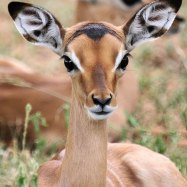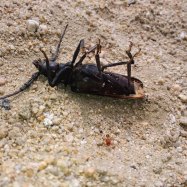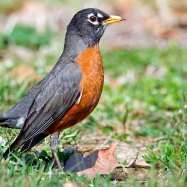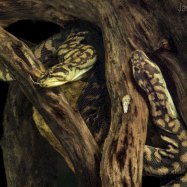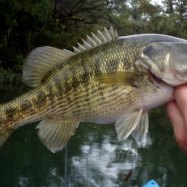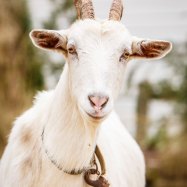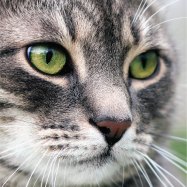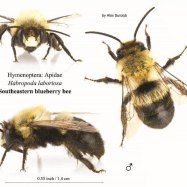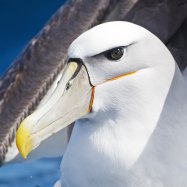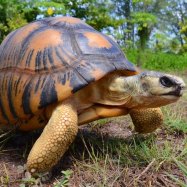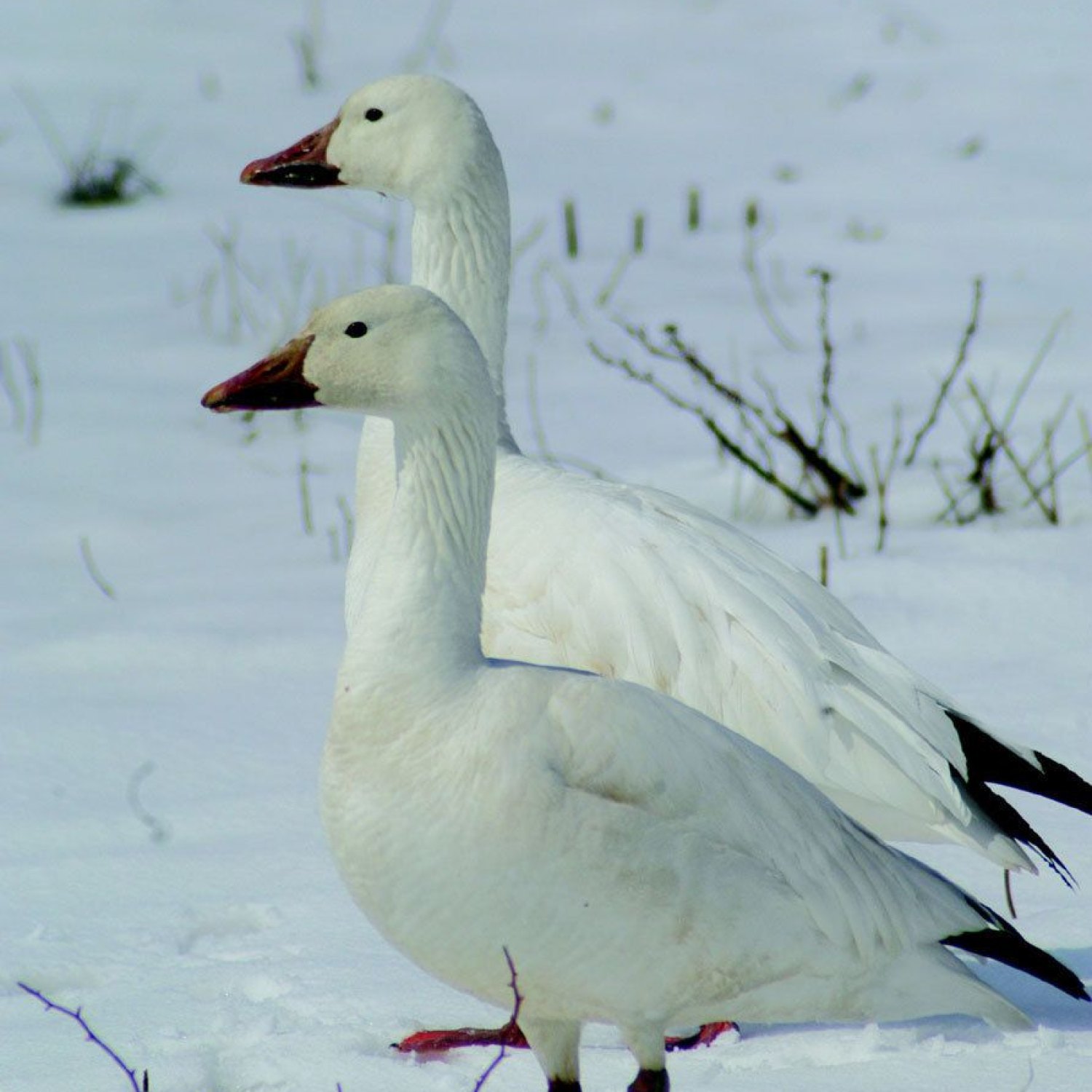
Snow Goose
25-41 inches (65-105 cm)
The Snow Goose, found in Alaska, Canada, and the United States, is a medium-sized bird belonging to the Anatidae family. Its body shape is characterized by a plump body and a long neck. The Snow Goose is typically 25-41 inches (65-105 cm) long, making it one of the larger goose species. These beautiful birds migrate in awe-inspiring flocks and are easily recognizable with their snow-white plumage. Spot one during your next trip to these regions! #SnowGoose #Alaska #Canada #US #BirdWatching
Animal Details Summary:
Common Name: Snow Goose
Kingdom: Animalia
Habitat: Arctic and Subarctic tundra, grasslands, marshes
The Fascinating World of the Snow Goose: A Marvel of Nature's Adaptability and Beauty
Have you ever seen a flock of Snow Geese take flight, their pure white wings against a bright blue sky? It is a majestic sight and a reminder of the incredible diversity of our planet's inhabitants. These birds, belonging to the species Anser caerulescens, are commonly known as Snow Geese, and they are a true wonder of nature.From their unique coloring to their remarkable adaptability, Snow Geese have captured the hearts and minds of wildlife enthusiasts and scientists for centuries. In this article, we will take a closer look at these magnificent creatures, their characteristics, and what makes them stand out in the animal kingdom Snow Goose.
The Snow Goose Species
Snow Geese are a part of the kingdom Animalia, the phylum Chordata, and the class Aves, making them birds. They belong to the order Anseriformes, which includes ducks, swans, and geese. The scientific name of Snow Geese, Anser caerulescens, translates to "sky blue goose," referring to their blue-gray plumage.These birds are divided into two subgroups: the white-morph and the blue-morph. The white-morph Snow Geese have a mostly white body with black wingtips, while the blue-morph has a bluish-gray body with white underparts and a white head. These variations in color are determined by genetics, and both are equally stunning.
Habitat and Geographical Distribution
Snow Geese have an extensive range that spans across North America. They are typically found in the Arctic and Subarctic regions, including tundras, grasslands, and marshes. During the spring and summer, they migrate to the high Arctic regions of Canada and Alaska for breeding Sheep. In the fall and winter, they move south towards the United States and Mexico in search of warmer climates and food.They are native to Canada and the United States, where they have been an essential part of the ecosystem for centuries. However, their range has expanded to include Iceland, Greenland, and even parts of Europe, as they adapt to changing environments.
Feeding and Diet
Snow Geese are herbivorous and primarily feed on plant matter such as seeds, leaves, and roots. During the breeding season, they primarily consume aquatic plants and small invertebrates, which provide them with the necessary nutrients for egg production and reproduction.In their winter range, Snow Geese rely heavily on agricultural fields for food, where they can often be seen feasting on crops such as grains, corn, and winter wheat. While this may cause damage to crops, it is essential for them to build up their energy reserves for the long journey back to their breeding grounds.
Their feeding habits have been a source of controversy, as Snow Geese populations have grown significantly in recent years, leading to concerns over their impact on other species and the environment. However, many conservation efforts are underway to manage their populations and ensure a healthy balance in the ecosystem.
Physical Characteristics
Snow Geese have a unique body shape that sets them apart from other bird species. They have a plump, medium-sized body with a long neck, giving them an elegant appearance. Their short legs and webbed feet are adapted for swimming and wading through wetlands.Their pure white plumage is their most distinctive feature, earning them the nickname "snowbird." However, as mentioned earlier, their coloring can vary depending on the morph. During the breeding season, they develop a reddish hue on their head and neck, giving them an even more striking appearance.
The male and female Snow Geese look similar, but the males are slightly larger than females. On average, Snow Geese measure between 25-41 inches (65-105 cm) in length and weigh between 5-7.5 pounds (2.3-3.5 kg). However, their weight can vary depending on their access to food and the season.
Adaptability and Survival
One of the most remarkable features of Snow Geese is their incredible adaptability. They have the ability to change their feeding and breeding habits to survive in different environments. For example, if their usual food sources become scarce due to environmental changes or human activities, they can shift to alternate food sources.Their migratory patterns also demonstrate their adaptability. Snow Geese can travel up to 5,000 miles each year on their journey between their breeding and wintering grounds. This remarkable feat requires excellent navigational skills and physical endurance, making them true survivors in the animal kingdom.
Conservation and Threats
Despite their adaptability, Snow Geese are facing several threats to their survival. One of the significant challenges is climate change, which affects their breeding and wintering grounds. As the Arctic temperatures increase, there is less snow cover, making it difficult for them to find suitable nesting sites. In addition, melting sea ice affects their food sources and navigation during their migration.Human activities such as habitat destruction, pollution, and hunting are also major concerns for the Snow Geese population. In the early 20th century, these birds faced near-extinction due to overhunting. However, significant conservation efforts have helped their populations rebound, and they are currently listed as a species of least concern on the IUCN Red List.
The Beauty of Snow Geese
The stunning white and dark variations of Snow Geese make them a sight to behold. Their grace and elegance in flight are a beauty to watch, and their gentle nature has captured the hearts of bird enthusiasts worldwide.But beyond their physical appearance, Snow Geese are also a wonder of nature's adaptability and resilience. They have adapted to changing environments and survived threats to their population, making them a true marvel of nature.
In Conclusion
In summary, Snow Geese are a unique and fascinating species that call North America their home. Their adaptability, stunning beauty, and survival skills have made them a beloved species and a symbol of hope for conservation efforts. As humans, it is our responsibility to protect and preserve these magnificent creatures, ensuring that they continue to thrive for generations to come. So, let us all take a moment to appreciate the beauty and wonder of the Snow Goose and do our part to protect them and their natural habitats.

Snow Goose
Animal Details Snow Goose - Scientific Name: Anser caerulescens
- Category: Animals S
- Scientific Name: Anser caerulescens
- Common Name: Snow Goose
- Kingdom: Animalia
- Phylum: Chordata
- Class: Aves
- Order: Anseriformes
- Family: Anatidae
- Habitat: Arctic and Subarctic tundra, grasslands, marshes
- Feeding Method: Herbivorous
- Geographical Distribution: North America
- Country of Origin: United States and Canada
- Location: Alaska, Canada, United States
- Animal Coloration: White and dark color variations
- Body Shape: Medium-sized with a plump body and a long neck
- Length: 25-41 inches (65-105 cm)
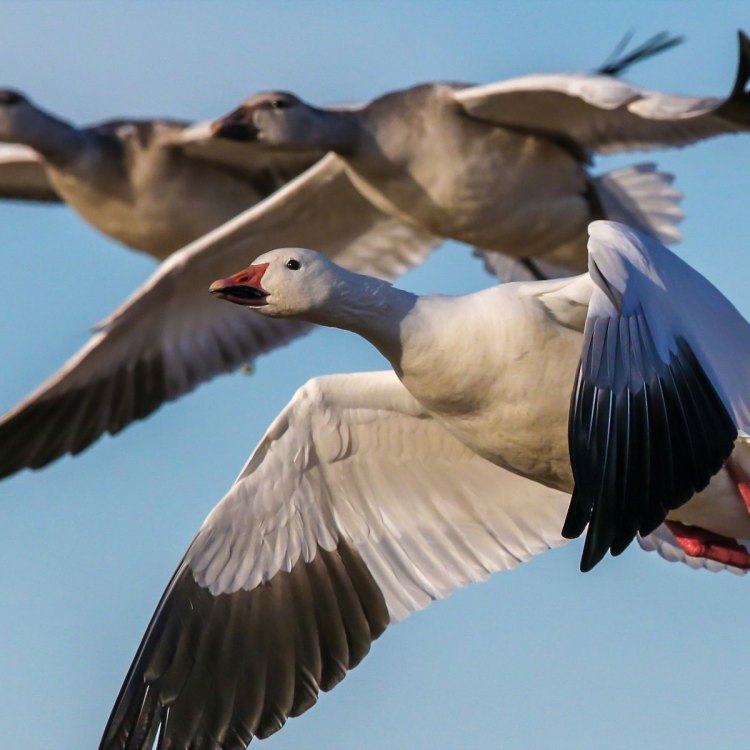
Snow Goose
- Adult Size: Medium-sized
- Average Lifespan: Around 15 years
- Reproduction: Sexual reproduction
- Reproductive Behavior: Monogamous
- Sound or Call: High-pitched honking sound
- Migration Pattern: Long-distance migratory
- Social Groups: Flocks
- Behavior: Highly social and gregarious
- Threats: Hunting, habitat loss
- Conservation Status: Least Concern
- Impact on Ecosystem: Food source for predators and helps in plant dispersal
- Human Use: Hunting, ecotourism
- Distinctive Features: White body with black wingtips, pink bill
- Interesting Facts: Snow Geese undertake long and impressive migrations, flying in large flocks that can number in the thousands.
- Predator: Arctic foxes, wolves, polar bears, and birds of prey
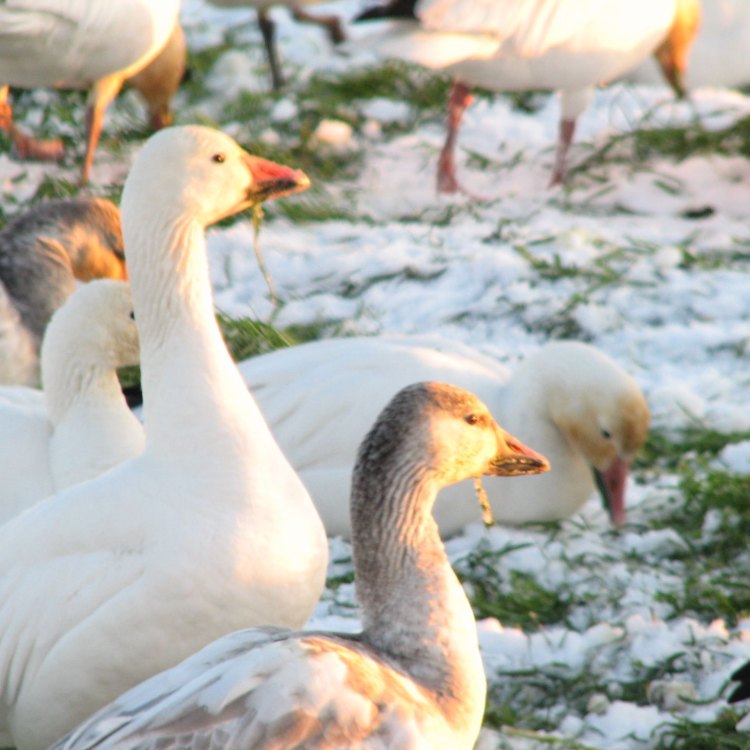
Anser caerulescens
Snow Goose: A Thriving Species with Impressive Migrations
The beautiful and graceful Snow Goose (Chen caerulescens) is a medium-sized waterbird that captures the hearts of birdwatchers and nature enthusiasts around the world. This stunning bird is known for its white body, black wingtips, and pink bill, making it easily distinguishable from other geese species. But what truly sets the Snow Goose apart is its impressive long-distance migratory patterns.Native to North America, the Snow Goose is a highly social and gregarious bird that can be found in parts of Canada, the United States, and even Mexico PeaceOfAnimals.Com. They are also found in Asia, particularly in Russia and China, where they migrate during the winter season. These magnificent creatures are a perfect example of the wonders of nature with their unique features, interesting behavior, and essential role in the ecosystem.
Size and Lifespan
Snow Geese are medium-sized birds, with their average weight ranging from 5 to 6 pounds and a wingspan of about 4 feet. They are slightly smaller than their cousins, the Canada Goose, but still, have an impressive wingspan that allows them to fly long distances. The adult Snow Geese can reach up to 30 inches in length.In terms of lifespan, Snow Geese can live for about 15 years in the wild, although some have been recorded to live up to 25 years. Their long lifespan is thanks to their protective breeding grounds and their strong ability to adapt to different environments.
Reproductive Behavior
Snow Geese reproduce sexually and they have a unique monogamous mating system. Once they find a mate, they stay together for life and only seek a new partner if one of them dies Satanic Leaf Tailed Gecko. During breeding season, these pairs can be seen performing elaborate courtship rituals, including head bobbing, honking, and wing flapping. Once the pair has bonded, they build their nest together, with the female laying 3-5 eggs. The parents take turns incubating the eggs, and after about 25-30 days, the eggs hatch. The young geese, called goslings, are precocial, which means they are born with the ability to walk and feed themselves.Sound and Call
One of the distinctive features of the Snow Goose is its high-pitched honking sound, which is often heard during their migration or when they are in large flocks. Pairs also communicate through a series of soft honks and calls to each other, strengthening their bond. These sounds are essential for maintaining their social structure and alerting the flock of any danger.Migration Pattern and Flock Behavior
One of the most awe-inspiring characteristics of the Snow Goose is their long-distance migratory pattern. Snow Geese can travel over 5,000 miles during their migration, flying in large flocks that can number in the thousands. These flocks are in a distinct V-shape formation, allowing them to conserve energy and navigate easier. The Snow Goose's migration is crucial for their survival, as they follow the changing seasons to find abundance in food and breeding grounds.In winter, Snow Geese migrate from their breeding grounds in the Arctic tundra to the southern United States and Mexico. They are also known to migrate to parts of Asia, including Japan, China, and Korea. In the spring, they return to their breeding grounds in the Arctic to nest and raise their young.
In addition to their impressive migration, Snow Geese are also highly social birds. They can often be seen in large flocks, called skeins, where they forage for food and rest together. These flocks can include thousands of Snow Geese, creating a beautiful spectacle in the sky.
Threats and Conservation Status
Unfortunately, like many other species, Snow Geese face several threats that affect their population. The two most significant threats are hunting and habitat loss. Hunting for both recreation and for food has greatly reduced the population of Snow Geese in the past, but conservation efforts and regulations have helped to increase their numbers in recent years.However, habitat loss remains a significant threat to the Snow Goose's survival. As their breeding grounds are in the Arctic tundra, the effects of climate change are a significant concern. With increasing temperatures and melting permafrost, nesting sites for Snow Geese could be lost, significantly impacting their population.
Thankfully, the Snow Goose is listed as Least Concern on the IUCN Red List, thanks to conservation efforts and regulations. However, continued efforts are needed to ensure their sustainability and protect their breeding grounds.
Impact on the Ecosystem
Snow Geese play a crucial role in the ecosystem, not only as a beautiful and essential part of nature but also as a food source for predators and help in plant dispersal. These birds feed on a variety of plants, including grasses, sedges, and grains, which helps to keep vegetation in check. This controlled grazing has a positive impact on the vegetation, providing natural resources for other animals and helping to maintain a healthy ecosystem.Moreover, Snow Geese are also an essential food source for predators like Arctic foxes, wolves, polar bears, and various birds of prey. Without the presence of Snow Geese, these predators may struggle to find food, causing a ripple effect throughout the ecosystem. The Snow Goose's role as both prey and grazers makes it a vital link in the food chain.
Human Use and Interesting Facts
Humans have a long history of interacting with Snow Geese, and they have been an essential part of their lives for centuries. These birds have been an essential source of food and clothing for indigenous communities living in the Arctic. However, with the rise of ecotourism, Snow Geese now have a different purpose in human use. Every year, thousands of birdwatchers and tourists flock to witness the impressive migrations of Snow Geese in North America, making ecotourism an important source of income for local communities.Apart from their migration, Snow Geese are also known for their ability to undertake long and impressive flights. They can cover over 70 miles per hour and fly up to 1,500 miles without stopping for rest or food. These birds are an exceptional example of natural endurance and resilience.
In Conclusion
The Snow Goose is a remarkable species, with unique features, interesting behavior, and a crucial role in the ecosystem. Their impressive migrations and gregarious behavior make them a popular species among birdwatchers and tourists. However, these birds also face a variety of threats, which require continued efforts to ensure their survival for generations to come. As the human population continues to grow and our planet faces challenges like climate change and habitat loss, it is crucial to appreciate and protect the wonders of nature, like the magnificent Snow Goose.
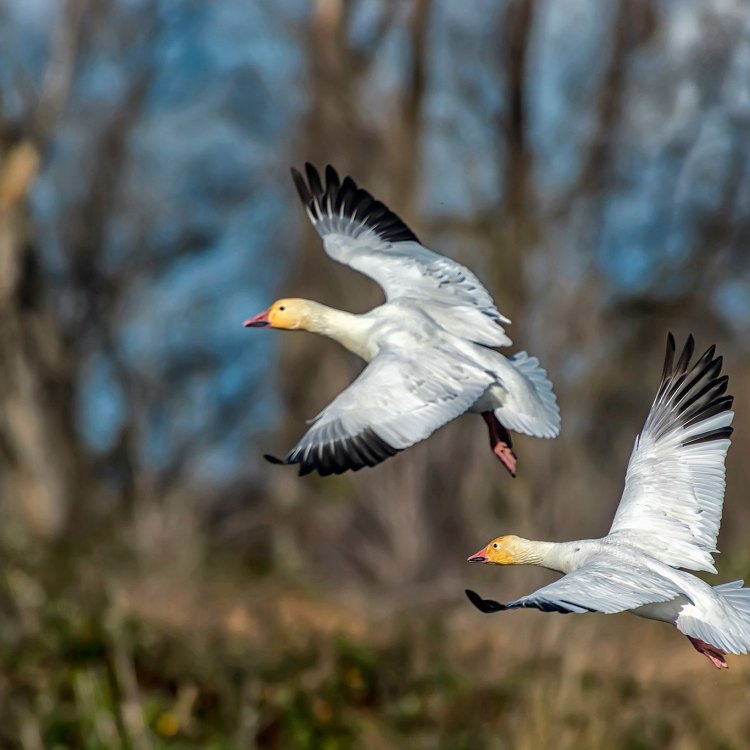
The Fascinating World of the Snow Goose: A Marvel of Nature's Adaptability and Beauty
Disclaimer: The content provided is for informational purposes only. We cannot guarantee the accuracy of the information on this page 100%. All information provided here may change without prior notice.

